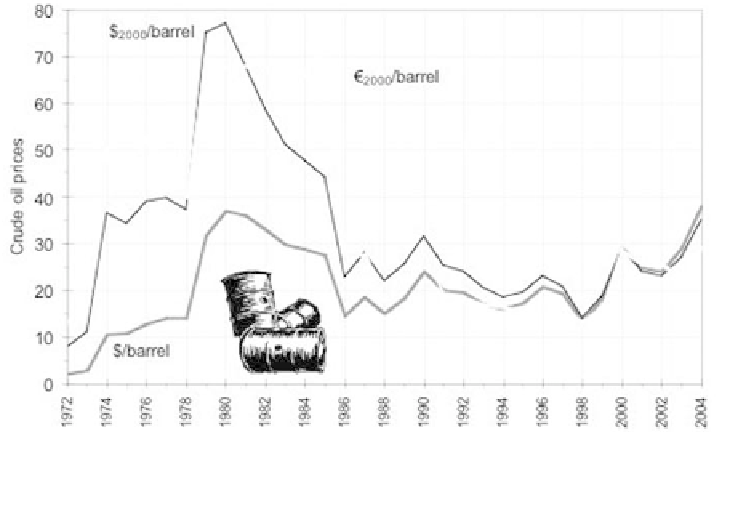Environmental Engineering Reference
In-Depth Information
Figure 6.4
Crude Oil Prices Given in Actual Prices and Adjusted for
Inflation and Exchange Rate (Shown in $, $
2000
and
€
2000
,
1 barrel = 158.7579 litre)
competition between renewable and conventional energy systems, because
external costs of renewable energy systems are usually much lower. However,
the estimation of all external costs is very difficult and often highly
controversial, because many assumptions have to be made.
Subsidies in the energy market
There is much confusion about what is meant by an energy subsidy. The
narrowest and most often used definition is a direct cash payment by a
government to an energy producer or consumer. But this is just one possibility
for stimulating production or use of a particular fuel or form of energy. The
International Energy Agency (IEA) defines energy subsidies as any government
action which concerns primarily the energy sector and which lowers the cost
of energy production, lowers the price paid by energy consumers or raises the
price received by energy producers. In practice, all energy subsidies are justified
by one or more of the following reasons (UNEP, 2001):
•
to protect employment in a particular indigenous industry or sector against
international competition or to promote job creation
•
to stimulate regional or rural economic development
•
to reduce dependence on imports for energy-security reasons
•
to lower the effective cost of and/or provide access to modern energy
services for specific social groups or rural communities as a means of
welfare support
•
to protect the environment.


